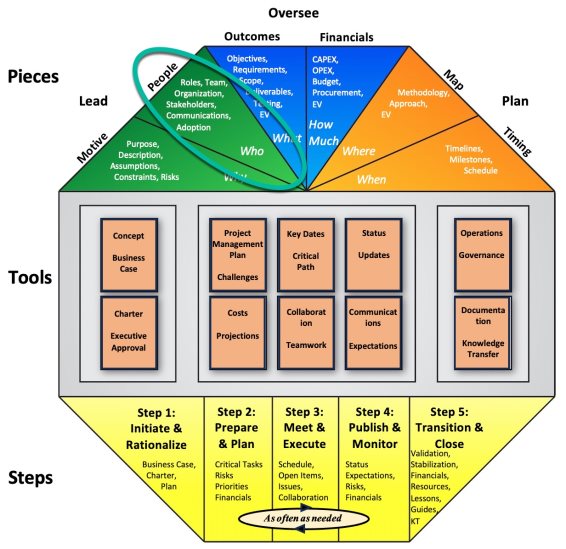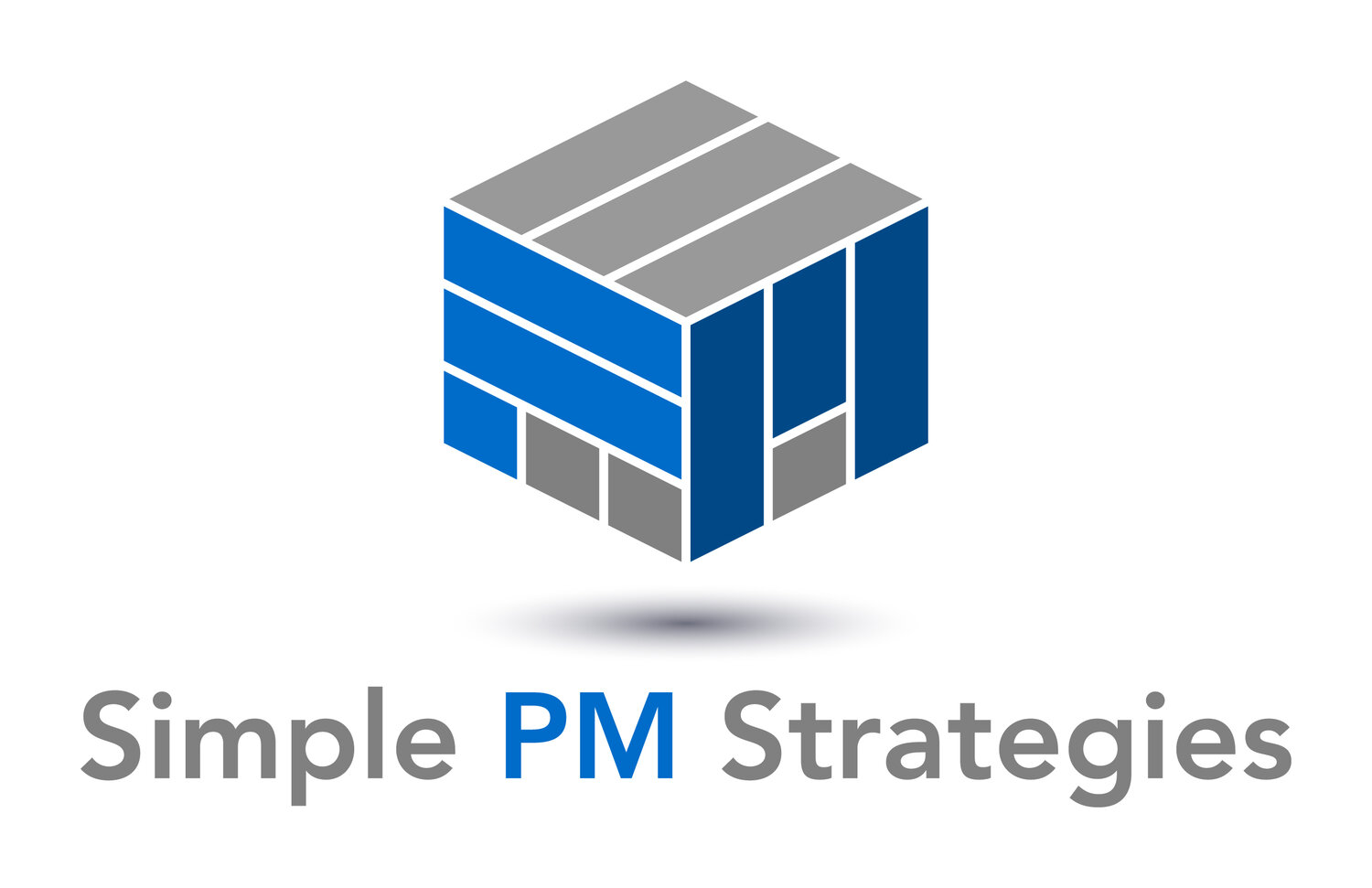4 Strategies to Create an Exciting Environment for Your Project
The purpose of this article is to cover strategies you can use right now to create an exciting, charged environment that inspires the team.
Team communications is a Communications piece under the LEAD domain and People segment in the MPM model.

Team communications is covered in Communications which is under LEAD and under People
Create a Charged, Exciting Environment
Yesterday in a meeting, my team and I had an amazing brainstorming session. The atmosphere was charged, and ideas were flowing; each team member felt safe trying to problem solve, and nobody made personal comments against others for their suggestions.
As a result, we generated ideas that shaved several months off our project; solutions we could never have created each working on our own.
Creating a safe space for your team is essential if you want to get to this point – where everyone feels comfortable, invigorated, and is working together effectively to create brilliant outcomes.
The Project Manager Role Sets the Tone
Some teams that I’ve worked on haven’t been able to reach that synergy: and project leaders are the ones who have the power to set the tones in these discussions through their reactions to suggestions - by their immediate comments, and how they are said, and of course, their body language.

The Project Manager Sets the Tone
As you lead your team through meetings, this is something to be aware of.
Explore the Other Perspective
How do you react when someone gives a suggestion that you might think is a little out there? Do you give it some thought, even just for a couple moments? Or do you immediately react with, “OK, but I don’t think that’s going to work.”, and then ask for more ideas?

Understand Each Idea from the Team Member’s Perspective
As the manager, wearing the project manager hat, and the group leader, others will look to you for direction.
Strategy 1, then is: understand each idea not from your own perspective but from the perspective of the person presenting the idea. Ask them to explain, and as they do, if necessary, reframe to make sure the solution is positioned objectively.
This is especially critical when others chime in, either to add or criticize. Since you are the leader, it is your prerogative to let things drift into personal criticisms, or reframe to keep things objective, collaborative and safe.
How an idea is discussed is important. It’s easy to dismiss someone’s input when they’re using different words than you would use, because words can seem so different as to appear incorrect.
Whenever a team member brings up an idea that seems incomprehensible, try playing it back to them in an objective way – this doubles as a communication tool to make them feel heard and help everyone be on the same page. Then they can correct you if that is not what they meant.
After you have clarity, you can bring that objective description into the context of solving the issue – ask the team member to speak to how the now-objective idea will solve the problem.
It’s Your job to Keep Things Safe
Keeping things safe is a very critical requirement to having productive and effective discussions. If you let it drift to personal attacks and not intercept to reframe comments and keep them objective, it will shut down creativity like slamming a door on a room.
Strategy 2 is: keep things safe. When you rephrase and echo back to them their suggestion use language that presents the solution in an objective way and leaves it open for others to add and build upon it.
You don’t really care how the idea is said, or how imperfect the presentation, you’re looking for the essence of what was said.
By respecting ideas presented, no matter how imperfect, you send a message to the rest of the team, that they don’t have to worry about whether they are going to be criticized or feel foolish if what they say isn’t phrased just right. As a team, led by the project manager’s approach, you’ll all stumble around together to understand the idea that has just surfaced, to find its value.
One of the reasons people don’t contribute to brainstorming is the feeling that they won’t be able to articulate their idea correctly, so they are reticent to speak, and their ideas die quietly in their head. You need those ideas because they can launch other ideas, that may just be in the direction of the breakthrough you are looking for.
Draw attention to the parts that contribute to the direction of a solution. For example, “Thanks for your suggestion, X. I really like how that ties into asking our clients for their feedback. Does anyone have other ideas that would tie into that feedback piece so we can get early evidence of the fit for our solution?”
Remember the Body Language Effects
Make sure to keep an open stance. Don’t cross your arms – that sends the signal that you’re not really open to communication.
Strategy 3 is one we have heard many times: keep your body language open. Maintain eye contact and be patient when others are responding – avoid cutting people off or talking over them.
Keep arms open, attention focused, and be interested in objectively understanding.
All of this sends a message to your team that you feel it is important to give them your full attention because you value their input.

Be vigilant to make sure everyone is engaged
Ensure Everyone is Engaged
Exploring for ideas works best when everyone is involved. We are all aware when we are all together, whether in person or on a video call, about who is comfortable contributing and who is not. If everyone is contributing there is better synergy.
Strategy 4 then is: keep everyone engaged.
Keep an eye on all team members– try to encourage everyone to focus on the issue you’re all working together to solve – if you frame suggestions around the issue, then comments hopefully won’t be directed towards people.
If someone is not engaged, when you next have control of the conversation, call out the names of those who are not contributing and ask them an open-ended question about what is being discussed.
If you can help foster an environment where everyone feels safe sharing ideas, where everyone is contributing, you can get some amazingly creative problem-solving going, and build strong rapport at the same time.
Summary
As the leader, it’s your responsibility to facilitate the conversation to keep it objective and reframe ideas to ensure you distill out the value of what is being suggested and how it will help the project. It is also your job to ensure everyone is engaged and contributing.
Use appropriate words and effective body language to encourage solution-focused collaboration and spark creative problem-solving in team discussions and meetings.
Action Steps / Apply This Knowledge
- Take 5 minutes at any point during your day. Think about the last conversation you had with someone. Did you keep an open posture? Did you speak without letting someone finish a sentence? Make a quick note for yourself to bring into your next meeting, that reminds you of one thing you could improve.
- At your next team meeting, when someone brings up something that seems out there, take their suggestion and make sure you frame it so that you have a simple, objective description of it – don’t use any adjectives, or describing words (like “bad”, “good”, “interesting”). Ask your team member to explain how the objective description will solve the problem.
- Prompt engineering guidance for AI GPTs such as chatGPT: “As a business leader managing a project whose purpose is Y, and delivering X, with Z kinds of team members, what are some communications strategies I should be considering to use in communications with them to create a high-performing team?”
Learn More to Do More
Business evolves through change initiatives otherwise known as projects. The key to managing these change initiatives so you have more time, and less stress is to use simple strategies and tools.
Check out the Learning Hub’s other Articles with Actionable Steps, organized with a busy leader in mind, by topic or main idea, and with some AI GPT (e.g. ChatGPT) prompt engineering suggestions under the Action steps: https://simplepmstrategies.com/learning-hub-index
LEAD – Create an Exciting Environment
© Simple PM Strategies 2024
